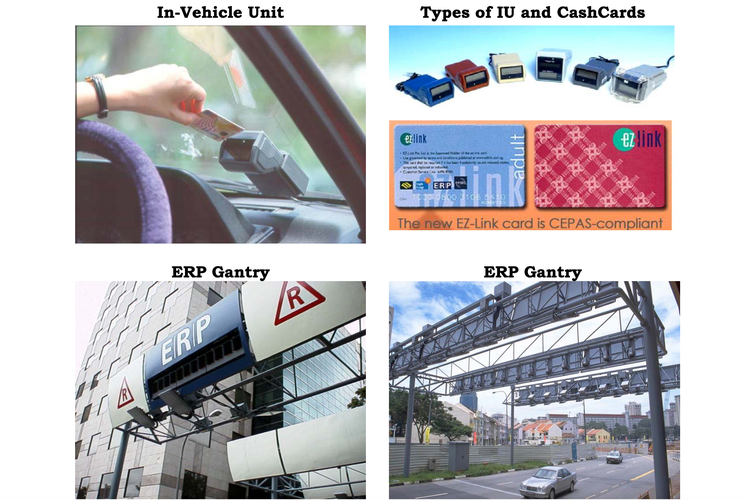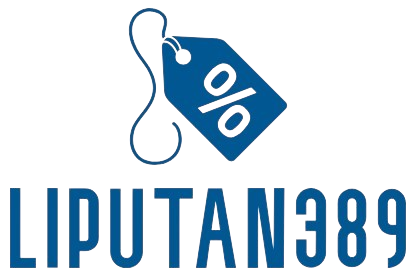KOMPAS.com – The Provincial Government of DKI Jakarta plans to implement Electronic Road Pricing (ERP or electronically paid roads) as a traffic control system to reduce congestion on several roads.
Through ERP, vehicles passing on several roads at a certain time will be charged a fee. This plan itself is contained in the Draft Regional Regulation (Raperda) for Electronic Traffic Control (PPLE).
Also read: What is a PLN Smart Meter that will replace conventional electricity meters?
With this plan, what is Electronic Road Pricing? If you are interested in knowing more, here is an explanation of the Electronic Road Pricing that will be implemented in Jakarta.
As a traffic control system, ERP or electronic toll road is nothing new. Before Jakarta plans to implement ERP, Singapore has already used it to control traffic on several roads.
In a journal entitled “Electronic Road Pricing: Experience and Lessons from Singapore”, Singapore is said to be the first country to implement an ERP traffic control system since around September 1998.
Conceptually, ERP is not the same as a toll road imposition system. ERP is more oriented to imposing costs or burdens on drivers for the congestion they cause. Meanwhile, for the toll system, fees are charged for access to special roads.
With such an orientation, in Menon and Guttiunda’s journal, ERP is also known as “Congestion Pricing”. Each vehicle that crosses several roads at a certain time will be charged.
The amount of fees charged will differ according to the density of road use. The amount charged for crossing the road during peak hours, such as when most people are going to work or returning from work, can be higher than usual.
The purpose of implementing congestion pricing is to reduce congestion by reducing the number of vehicles on the road. This fee also diverts motorists from using public transportation.
 Illustration of infrastructure for implementing Electronic Road Pricing in Singapore, consisting of IU, ERP gateway, and Control Center.
Illustration of infrastructure for implementing Electronic Road Pricing in Singapore, consisting of IU, ERP gateway, and Control Center.In Singapore, ERP implementation is supported by three main infrastructures. First, the In-vehicle Unit (IU) device installed in the user’s vehicle to be able to communicate with the ERP gate when crossing the road.
Crossing fees will be sent to IU and users can pay by scanning an electronic card (smart card) that contains the balance on the device. Each type of vehicle, such as a motorcycle, car or bus, has an IU type with a different color code.
After IU, the second major infrastructure is the ERP gateway itself. This gate is equipped with several tools, such as communication antennas, vehicle detectors, and violation surveillance cameras.
Also read: What is the function of the RFID chip that will be installed on white license plates?
For your information, the camera functions to record violations if passing users do not pay a fee. The ERP gate functions as a communication line between the driver and the Control Center
As the third main infrastructure, the Control Center is a server that functions to monitor motorists, process cross-road fee payment transactions, and set the time period to pass through all ERP gates.
That is the application of Electronic Road Pricing in Singapore. So, what about ERP implementation in Jakarta? The ERP implementation plan in Jakarta had actually been targeted to start running in 2020. However, this plan has not been realized.
Now, the Provincial Government of DKI Jakarta is working on the PPLE Raperda. ERP implementation in Jakarta will run if the Raperda PPLE has been ratified, as revealed by the Head of DKI Jakarta Transportation Agency (Dishub), Syafrin Liputo.
Quoted from Kompas.comSyafrin said that the PPLE Raperda was targeted to be ratified this year, but he did not mention an exact time.
“I can’t confirm the middle or end of the year (the PPLE Raperda was passed), what is clear this year,” said Syafrin.
Although it is not certain when the ERP in Jakarta will run, there are a number of plans for implementing it in the Raperda PPLE. For example, in Article 9 Paragraph 1 of the Raperda PPLE, there are 25 roads that will be charged a fee for crossing.
Some of these roads include, such as Jalan Gajah Mada, Jalan Hayam Wuruk, Jalan Majapahit, Jalan Jenderal Sudirman, and so on. Apart from the roads, there is also a time plan for ERP implementation contained in the Raperda PPLE.
In Article 10 paragraph 1 of the Raperda PPLE, the implementation of ERP on several road sections will run every day from 05.00 to 22.00 WIB. In the Raperda PPLE, not all types of vehicles will be charged.
https://www.youtube.com/watch?v=KvxI7c_jOVQ
Several vehicles are exempted from the imposition of ERP, such as electric bicycles, public motorized vehicles with yellow plates, official vehicles other than black plates, ambulances, fire engines, and hearses.
For fees or tariffs from the ERP, the provisions will be determined specifically through a Governor Regulation, after obtaining approval from the Regional People’s Representative Council of DKI Jakarta Province.
Read also: What is Starlink? Satellite Internet Services Promised to Come to Indonesia Starting in 2023
In order to determine the ERP fee, the DKI Jakarta Transportation Agency has proposed an amount ranging from Rp. 5,000 to Rp. 19,900 for one trip. Thus the ERP implementation plan in Jakarta, I hope this is useful.
Get updates selected news And breaking news every day from Kompas.com. Let’s join the Telegram group “Kompas.com News Update”, how to click the link https://t.me/kompascomupdate, then join. You must first install the Telegram application on your cellphone.
